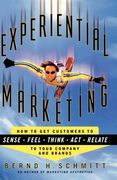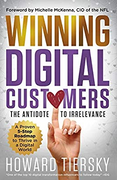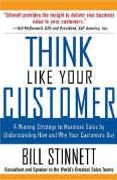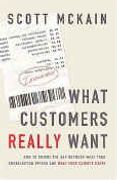
A 5 Minute Overview Of
Experiential Marketing
How To Get Customers To Sense, Feel, Think, Act and Relate To Your Company and Brands
About the Author
Bernd Schmitt is a professor, founder and director of Columbia Business School's Center on Global Brand Management. Professor Schmitt holds a Ph.D. from Cornell University and has consulted and given lectures and seminars in more than twenty different countries. He is also a frequent speaker at marketing and management conferences, and has appeared on CNN, CNBC and the BBC. Professor Schmitt's Web site on experiential marketing is located at http://www.exmarketing.com.
The Main Idea
Experiential marketing is a new way to look at the goal of marketing.
Traditional marketing is features-and-benefits oriented—that is, consumers are assumed to be rational decision makers who seek to maximize the number of benefits they derive by comparing different products that offer different sets of features. In this context, branding is used to create awareness and attention.
Experiential marketing, by contrast, suggests that consumers want to be stimulated, entertained, educated and challenged by the products or services they buy. Thus, they are looking for brands that provide them with memorable experiences. The central activity of experiential marketing is to develop efficient ways to create and deliver experiences.
As business leaves the last century and enters the new, many companies have reengineered and acquired new assets, new strengths and new competencies. At the same time, the information revolution is creating additional opportunities for organizations to grow, expand and evolve. Experiential marketing—which has at its heart the ability of a company to create and deliver a desirable customer experience—holds the key to leveraging those new assets, strengths and competencies to achieve growth.
Sections in this Books
1. The Experiential Marketing Revolution. Today's consumer wants to buy products and services that dazzle their senses, touch their hearts or stimulate their minds. They respond best to marketing that delivers an experience they enjoy rather than simply provides a shopping list of features and benefits.
2. The Five Types Of Experiential Marketing Experiences. undefined
3. The Structural, Strategic and Organizational Issues of Experiential Marketing. From a structural perspective, experiential marketing can be used to build holistic marketing programs which are hybrid combinations of two or more different types of customer experiences.
From a strategic perspective, most attention focuses on which customer experiences are appropriate for the circumstances, and how these efforts can be linked together for corporate branding and global branding programs.
From an organizational perspective, building an experience oriented organization won't require special structures or processes—just an ability to innovate, take a top-down perspective and a willingness to collaborate with other parties.
Want in-depth 30-minute summaries?
In addition to this 5-minute overview, Summaries.Com has a premium 30-minute summary of this book and 1,000+ more, to help you advance your career and business.
Check Out Summaries.com Premium Plans Today!Want more 5-minute Snapshots?
To get a new 5-minute business book snapshot each week, sign up for the Summaries.com free plan.
Sign Up for the Summaries.com Free PlanDigital Customers 101 Collection
If you enjoyed this summary, here is a collection of related business book summaries, to help you get ideas and strategies that will give you an edge over your competition.
This mini-course will give you ideas on how to stand out in today's digital world.
Buy Digital Customers 101 Collection (5 x 30-Min Summaries)
Experiential Marketing
How To Get Customers To Sense, Feel, Think, Act and Relate To Your Company and Brands
by Bernd Schmitt

Winning Digital Customers
The Antidote to Irrelevance
by Howard Tiersky

Think Like Your Customer
A Winning Strategy to Maximize Sales by Understanding How and Why Your Customers Buy
by Bill Stinnett

What Customers Really Want
How to Bridge the Gap Between What Your Organization Offers and What Your Clients Crave
by McKain Scott

Customers Rule!
Why The e-Commerce Honeymoon Is Over And Where Winning Businesses Go From Here
by Roger Blackwell and Kirstina Stephan